- News
- Reviews
- Bikes
- Accessories
- Accessories - misc
- Computer mounts
- Bags
- Bar ends
- Bike bags & cases
- Bottle cages
- Bottles
- Cameras
- Car racks
- Child seats
- Computers
- Glasses
- GPS units
- Helmets
- Lights - front
- Lights - rear
- Lights - sets
- Locks
- Mirrors
- Mudguards
- Racks
- Pumps & CO2 inflators
- Puncture kits
- Reflectives
- Smart watches
- Stands and racks
- Trailers
- Clothing
- Components
- Bar tape & grips
- Bottom brackets
- Brake & gear cables
- Brake & STI levers
- Brake pads & spares
- Brakes
- Cassettes & freewheels
- Chains
- Chainsets & chainrings
- Derailleurs - front
- Derailleurs - rear
- Forks
- Gear levers & shifters
- Groupsets
- Handlebars & extensions
- Headsets
- Hubs
- Inner tubes
- Pedals
- Quick releases & skewers
- Saddles
- Seatposts
- Stems
- Wheels
- Tyres
- Health, fitness and nutrition
- Tools and workshop
- Miscellaneous
- Cross country mountain bikes
- Tubeless valves
- Buyers Guides
- Features
- Forum
- Recommends
- Podcast
feature
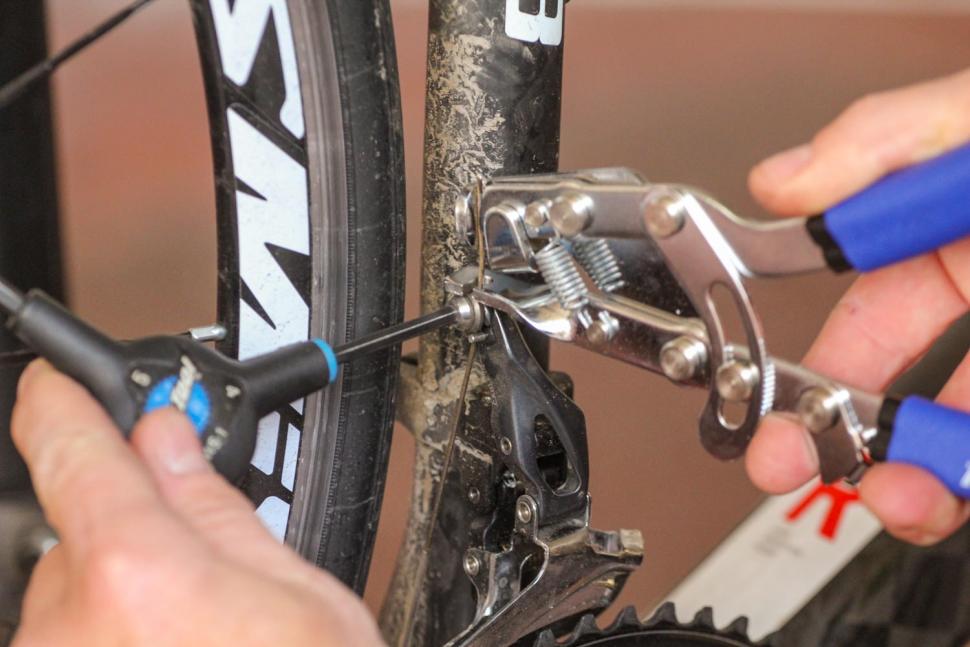 How to index front gears 01
How to index front gears 01Front mech adjustment — get sweet shifting in 7 easy steps
Accurate front derailleur indexing is critical to maintaining fast, fault-free front shifting. As with all indexed gears, good performance is down to properly adjusted front derailleur limits and zeroing in on the right cable tension. Front derailleurs work hard to deliver the chain across big gaps in comparison to rear derailleurs and they need a little bit of TLC to keep them sweet. Here's how.
Our guide below shows you what we believe is the best method to index your front gears. We've included a list of the tools and materials that you will need to complete the job and in some cases where you can buy them. If there are others that you prefer then feel free to let everybody know in the comments.
Tools & Materials
•Small Phillips screwdriver
•Cable puller
•Allen keys
Derailleur positioning
1. Before you get too worked up about cable tension it's vital to know that your front derailleur is positioned accurately. The gap between the lower edge of the front derailleur cage and the top of the outer chainring teeth should be 1-3mm for optimal performance. The inner plate is shaped to lift and push the chain at this height. Lower and you'll foul the teeth on the outer ring, higher and the delivery will be slow and vague.
2. Check for cage alignment as well. Direct mount front derailleurs will automatically be lined up accurately as they're bolted direclty to the frame - which should be square. For band clamp front derailleurs, the cage should be exactly in line with the centre line on the chainrings. Shift the chain across the chainrings to see that this is the case. Make any angle adjustments at the band clamp, but be careful not to change the clamp height when you do, or you might negatively impact the cage height.
Barrel adjuster
3. You'll need to release the cable tension in the front derailleur cable. Turn the barrel adjuster all the way clock wise to release any slack in the system. They give it a full turn anti-clockwise to give some adjustment lee-way in both directions.
Setting cage stops
4. To set your inner limit, first shift your front derailleur into the small chain ring and your rear derailleur into the largest cog. Adjust the inner limit screw with an appropriately sized screwdriver. Take care as the heads of the screws are easily damaged - making subsequent adjustments harder. The screw is usually marked by a small letter 'L' for Low. You want to turn the inner limit screw until the inner part of the derailleur cage is as close as possible to the chain without rubbing (as indicated by the tip of the screwdriver in this shot).
5. To set your outer limit, first shift your front derailleur into the large chain ring in the front and your rear derailleur to the smallest cog. Adjust the outer limit screw with an appropriately sized screwdriver. Take care as the heads of the screws are easily damaged - making subsequent adjustments harder. The screw is usually marked by a small letter 'H' for High. You want to turn the outer limit screw, found on the top of the front derailleur body, until the inside edge of the outer cage plate of the front derailleur is as close as possible to the chain without rubbing. 1-2mm is about right. (Where the tip of this screwdriver is pointing...)
Reset cable tension
6. Reset the overall cable tension at the cable anchor point. Use a cable puller like this BT-2 Park Tools one which grabs the cable and allows you to make fine adjustments without fraying trimmed cables. The locking feature on this particular model means once set and locked, you could let it go, while you tighten the anchor bolt.
Check shift speed
7. When you've made your cage limit adjustments and set the cable tension, you can give the cranks a turn and operate the front shifter. You should now have a front derailleur which lifts, pushes or drops it quickly and cleanly to the adjoining ring. If the upshift is a little slow you can add tension to the barrel adjuster.
Latest Comments
- robgru76 37 min 10 sec ago
I made a complaint to the CMA last week about monopoly like behaviour/price gouging but received a response the next day saying they could not...
- IanGlasgow 50 min 10 sec ago
Agreed. I won't consider any product that doesn't use USB-C anymore. I usually have a USB-C cable and a battery bank in my toolkit which will...
- David9694 47 min 8 sec ago
Pensioner left with £1,300 vet bill after cyclist ran over dog in Swalecliffe, near Whitstable, and fled...
- Terry Hutt 6 hours 10 min ago
Those models aren't miserable etc. They're hungry.
- Bungle_52 13 hours 17 min ago
This was a failure to give way at a roundabout so although it was relatively straightforward to anticipate and avoid there is traffic law to...
- chrisonabike 13 hours 25 min ago
Ah - I have now read Wikipedia on loons, and perhaps I can understand their objections:...
- wtjs 14 hours 37 min ago
she questioned what Police Scotland is doing to "deter dangerous driving and protect cyclists"...
- wtjs 14 hours 47 min ago
I've got a few reports coming up to one year where I've been told that they will take action but I don't know what action yet. I'll let you know...
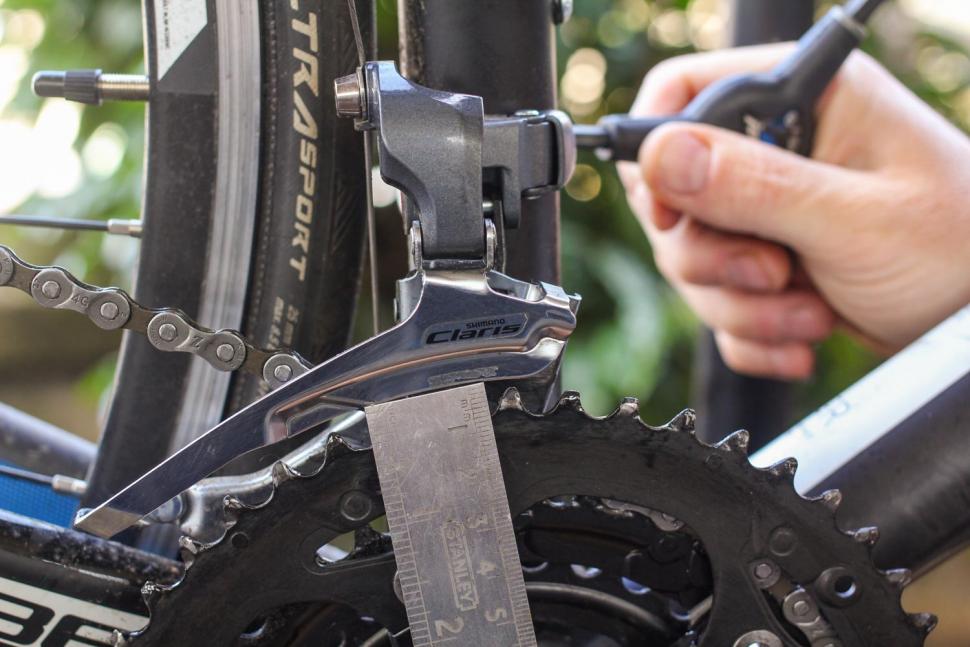
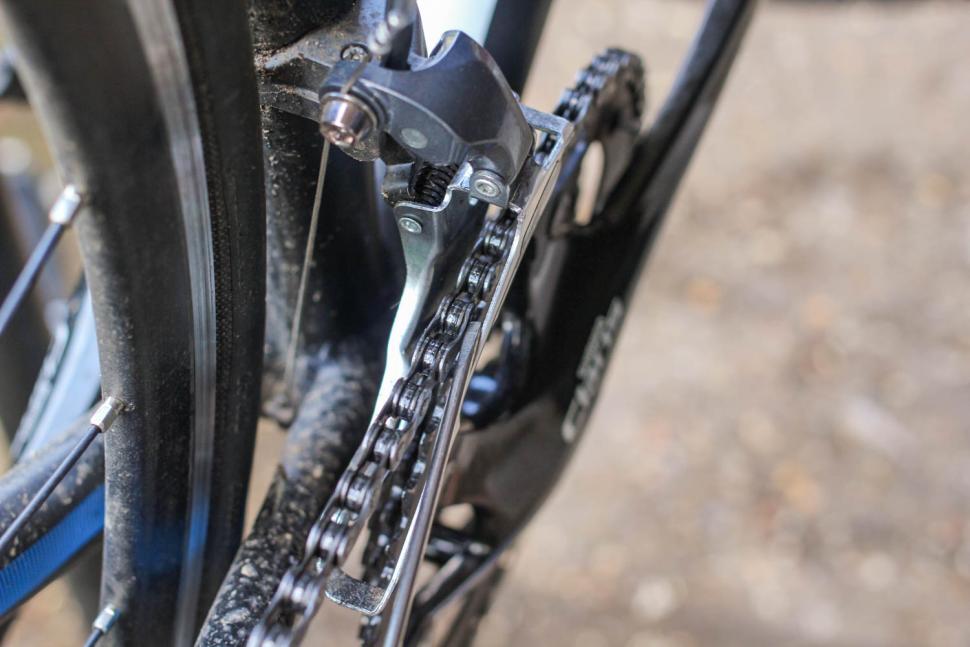
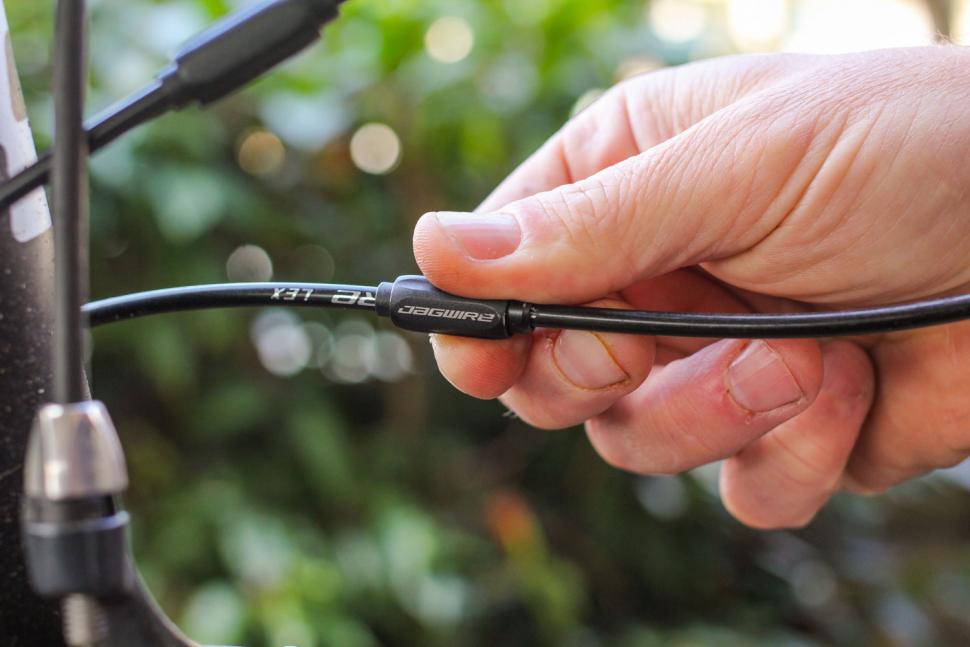
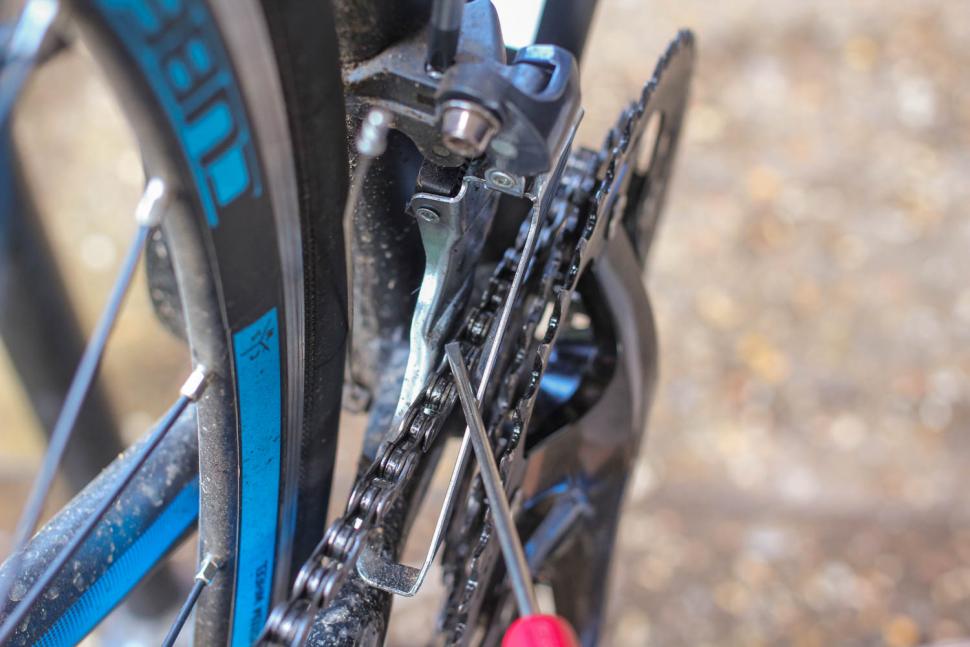
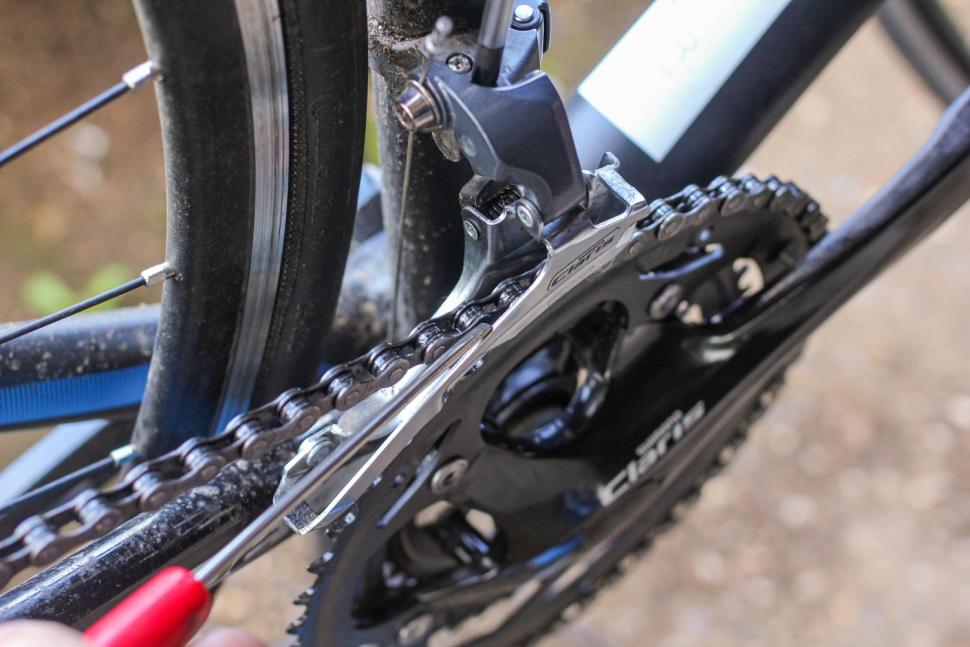
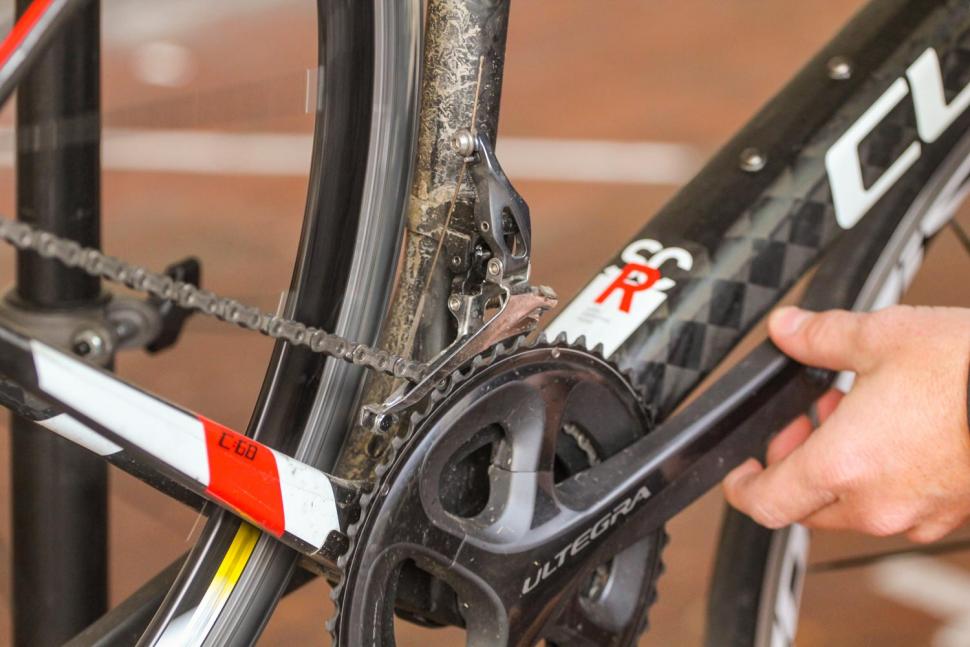
Add new comment
15 comments
I'd not realised until I read the Shimano manual for my Ultegra 6800 groupset that the indexing/cable tension is supposed to be set on the big ring trim position.
There is an excellent Arts Cyclery 'ask a mechanic' video on YT which demonstrates it very well.
I also like the idea of using the lower limit screw to move the cage before attaching the cable, in order to give a bit of extra tension if you don't have a cable puller.
SRAM yaw front mech - https://www.velonews.com/gear/technical-faq-breaking-down-the-setup-for-...
"Turn the barrel adjuster all the way clock wise ..." Clockwise when viewed from which end?
Top tip, clean your bike first
Top tip if you are on Shimano: upgrade your front derailleur to a more recent version.
The new ones come with a build in cable tension adjuster, which you adjust with an allen key. The limit screws also use the same allen key.
I think they are more or less the same between 105 (R7000), Ulregra (R8000) and Dura Ace (R9100). Difference is in price, materials and weight.
https://youtu.be/_rTNjxzUV2o?t=168
Additional advantage for me: the remaining cable doesn't poke either in my leg or the wheel any more.
Now Shimano only has to improve the rear derailleur, because the cable tension adjuster of those ones really does such.
The trouble with that advice for some of us is that it doesn't fit with our preferred (triple) gearing options. For instance, Shimano's only current triple offering - Tiagra 4703 - is not backward compatible with other 10-speed groupsets.
So I've had to stockpile my favourite tipple - sorry, triple...
Tripel.jpg
Is it just me that doesn't like the new font mechs? If only they had limit screws instead of the low and high adjusters on a carrier which effects the position in both the 'limit' and the 'trimmed' position. This means it's sometimes impossible to stop chain rub when cross chaining, which you are forced to do by the large difference between compact chainrings. Triples were much better.
I'll drink to that.
You'll find those little stickers on some shop floor bikes, but mostly on new after market mechs, I suppose.
I've never felt the need for a ruler to measure the gap twixt mech and chain ring - or a cable puller for that matter - and how did we manage in the days of Biopace, oval-ringed, chainsets? Well, the inner cage was a flat as a flat thing and more modern ones are stepped - "optimised" - and limited to specific gaps between middle and outer chain ring.
I have one bike that is a pain to index the rear mech, but I can say with hand on heart I've never had a problem with a front mech - double or triple. Perhaps I've just been fortunate.
In any case I think it's safe to say I shan't be going over to 1x any time soon...
Biopace chainset.jpg
Nope, I find them fiddly to set up and out on a ride I'm just going to use a frame stop barrel adjuster, rather than carry the long 2mm hex key. The only advantage is that they're lower profile, which helps with tyre clearance, and a shorter/quicker shift than long arm mechs.
No mention of use of the cable adjuster to get the cable tension correct so the trim funcitons operate correctly either. I'm surprised how few people understadn what they are and what they are for. Grinding away as they pedal.
Campag make a neat little tool for setting front mech alignment and height that works really well and saves stuffing around with a ruler:
https://www.tredz.co.uk/.Campagnolo-Front-Mech-Alignment-Tool_121654.htm
Certainly for Shimano limit screws the likelihood of damaging the heads is increased by using a Phillips screwdriver.
The Japanese Industrial Standard is said to have been done away with, but if your Japanese derailleur is old enough to have crosshead limit screws rather than diddy hex head screws then the proper tool is worth the investment IMHO. (Park Tool belatedly offers its DSD-2 that supposedly “exceeds the standard” of the Vessel Megadora 900 +2 ‘JIS’ screwdriver pictured below - at around four times the price - for those wishing to colour match with their cable puller.)
F743333A-36C8-4D9B-95BD-1961A74C5A3B.jpeg
Nice, but Shimano's little sticker seems more cost effective, if less reusable.
https://www.slowtwitch.com/articles/images/7/75227-largest_1_FD_sticker.jpg
Also, no mention of adjusting for middle chainring on a triple? I know it's unfashionable, but at least one of the photos is a triple....
As usual. this Road CC how-to skates over the surface of the subject giving only the outline of what can be a more complex process than is described. They also (as another poster mentioned) failed to mention the JIS screwdriver that prevents screw-chew via cam-out of ill-fitting screwdrivers such as a Philips or Posi in a Japanese derailleur adjustment screw.
The failure to mention the ins & outs ('scuse pun) of the trimming mechanism, especially for a triple, is one example of a skate-over-the-surface approach to this article. Another is a failure to mention the need to adjust the extent of the cage throw in various cases, for example when the chainstays are short and the chain gets more bent as a consequence. To elaborate ....
With a triple mech and a shorter chainstay, you will have to have the chain rub the cage outer plate of the cage in small/small as otherwise there will be times when the cage won't push hard enough to drop the chain from middle to inner ring. The trimming mechanism is preciely to deal with this, as it moves the cage a tidge outward to stop the rub , once in small/small.
There are many other such refinement necessary to get a front mech working as it should - especially for triples. (And triples are very useful things, for many reasons, which is why they were used for decades and why many still use them).
Cugel
That sets the height very nicely, but it doesn't help with the alignment. The Campag tool clips over the big ring and allows a much easier alignment of the outer plate of the cage with the plane of the big ring. Also works for Shimano